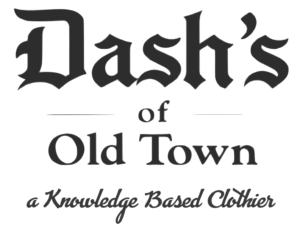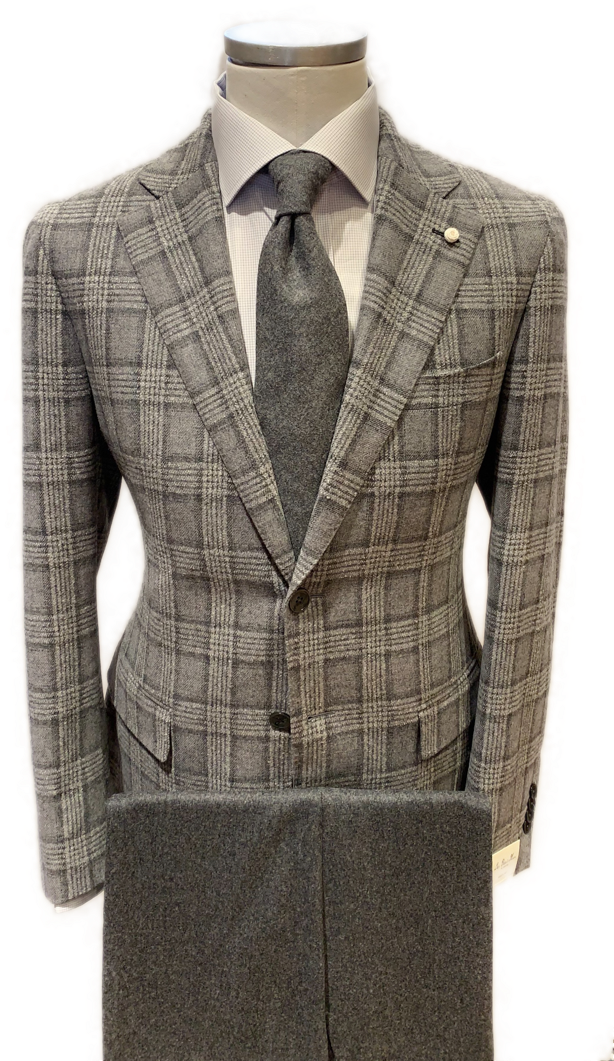Fabric IQ
Fabric, fabric, fabric…the fabric and the mill are two of the most important elements that comprise a well made suit or shirt. Generally speaking, a higher thread count means a smoother, silkier and more often, expensive fabric. All too often, I’ve found that not enough attention is paid to the quality and reputation of the mill when it comes to the fabric. At Dash’s, we work diligently with our partners to secure the highest quality fabrics from respected European mills. Our goal in this section is to provide an education about fabrics, fabric types and detail your options for picking the right fabric.
Common Shirt Fabrics
Broadcloth (Poplin) – A tightly woven fabric with a simple over-under weave and light sheen. Broadcloths are typically thinner, lighter fabrics with bright, true colors.
Pinpoint Oxford – Pinpoint offers a finer yarn and tighter weave than traditional oxford cloth. Pinpoint fabrics are slightly heavier and thicker than broadcloths. They have a reputation as fairly durable fabrics.
Royal Oxford – While similar in name, Royal Oxford is much different than oxford or pinpoint oxford cloth. It is a dressy fabric, woven with fine, lustrous yarns providing a distinctive sheen and texture.
Gingham – Gingham is not a fabric weave, but a popular and distinctive pattern. Classic Gingham shirts are commonly made from broadcloth, but can also be made form twill.
Sea Island – This is a more desirable cotton for its “longer staples” which allow it to be threaded into finer, stronger threads. As such, Sea Island cottons are usually made in 2-ply, higher thread counts (120s+).
Twill – Twill is a popular shirt fabric which comes from an extremely tight weave and usually high thread counts. It has a diagonal texture, which allows it to be softer than broadcloth and drape more easily. Twill doesn’t have the “crisp” look of broadcloth, but it’s easy to iron and resistant to wrinkles.
Thread Count
Thread count is often referred to with a number like 120s, 140s and so on. A common misconception is that the number equals threads per inch. These numbers actually refer to the yarn size, so 120s means there are 120 hanks (1 hank = 840 yards) of yarn in one pound. However, if you ask many clothiers what the thread count on a fabric is, you’ll often hear “120s” because this number is easier to understand even though it’s not a literal measure of the thread count.
Ply
Ply is a measure of the number of yarns twisted together to a make a single thread. Fabrics can either be two-ply or single ply. Two-ply means that two yarns are twisted together to make a single thread count that is woven into the fabric. Two-ply fabrics enjoy a reputation as a superior fabric over single ply.
Putting it all Together
Suits and shirts with a high thread count are more expensive to produce and popular if you like a silky and soft texture. However, thread count is not everything. The weave of the fabric, the ply, the weight and the mill that it was produced in are often more important factors when making a purchase. At Dash’s, we take the time to travel and acquire fabrics from the best mills and this is what sets us apart. We only carry fabrics from some of the world’s foremost mills such as: Zegna, Loro Piana, Cerruti, Guabello, V. Barberis and Fintes.

